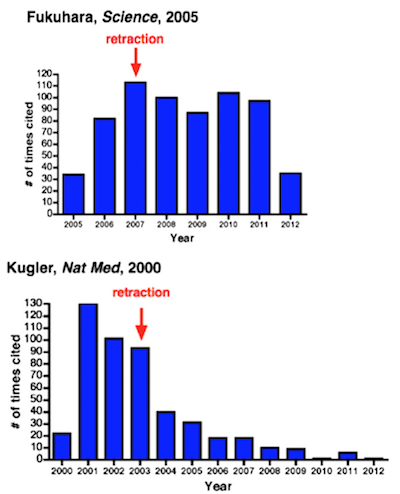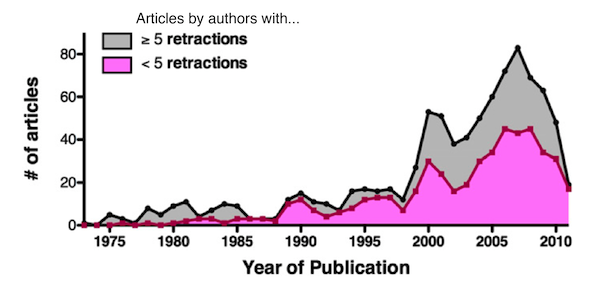Fraud
Posted in Uncategorized

New analysis in PNAS is used to support several new conclusions:
My faith in the rigor of the authors’ analysis is shaken by their use of 3D, angled pie graphs (Fig. 2)– but I’ll try not to throw the baby out with the bathwater. Speaking of that Fig. 2, it might be interesting to divide by the total scientific output of each country, to see if the proportion of fraudulent papers varies significantly by country.
Also, apparently retractions don’t always staunch the flow of citations…

Interestingly, according to their data, most fraudulent papers from about 1985-2000 were from serial offenders– authors with 5 or more fraudulent papers in total. Even today, these serial offenders account for a lot of the fraud.

The obvious and difficult question is: how many fraudulent papers are not detected and retracted?
Yes, good point.
I’m guessing that the serial offenders are over-represented in the last graph, because they keep doing it until they get caught and then all of their fraudulent papers are retracted en masse. I’m guessing many of the one-off cases of fraud are less likely to be detected.
More discussion on the excellent writedit blog:
http://writedit.wordpress.com/2012/10/02/opaque-retraction-notices-hiding-growing-culture-of-misconduct-incentivized-by-academic-career-pressures-kudos-to-pnas-paper-retraction-watch/
Some frauds go on for many years even if they are pointed out. See this blog from 2005: curiousscientist.blogspot.com. It describes a couple of neuroscience papers with serious issues, which have not yet been retracted.